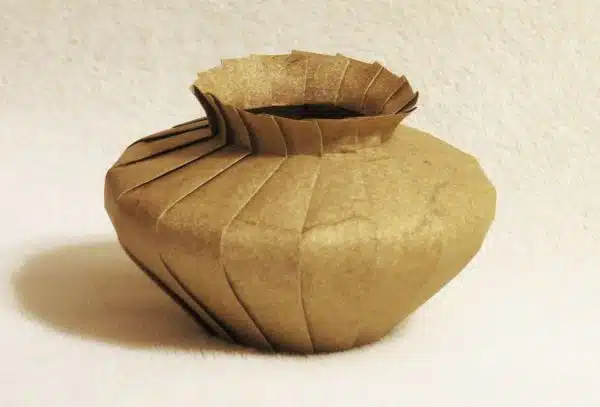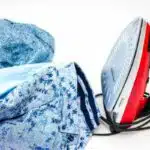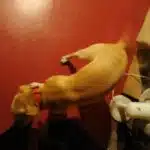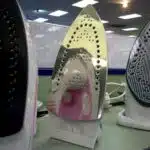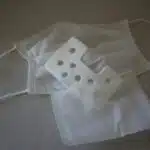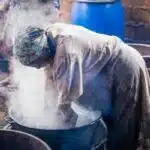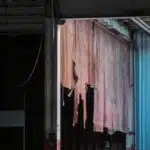Ironing pleated pants and skirts can be a challenging task for many individuals. Whether it is for a formal event or a professional setting, it is important to present yourself in the best possible manner with wrinkle-free clothing. As a tailoring and alterations expert, I have encountered numerous clients who struggle with ironing their pleated garments. Through my experience, I have developed effective techniques that can help you achieve perfectly ironed pleats.
It is essential to understand that ironing pleated pants and skirts require patience, attention to detail, and the right tools. In this article, we will discuss step-by-step instructions on how to iron pleats without ruining the shape of the garment. We will cover the necessary equipment needed and provide useful tips on how to avoid common mistakes when ironing pleats. By following these guidelines, you can ensure your pleated pants and skirts look sharp and crisp every time you wear them.
Understanding Pleated Garments
Pleated garments are a popular choice for many individuals due to their elegant and sophisticated appearance. Pleats are folds that are sewn into the fabric of a garment, creating a decorative and functional design element. There are various styles of pleats, including box pleats, knife pleats, and accordion pleats, each with its own unique appearance.
Another important aspect to consider when dealing with pleated garments is the size of the pleat. The size of the pleat can vary greatly depending on the design of the garment and can range from small and narrow to large and wide. It is crucial to understand the different types of pleats and their sizes to ensure proper care and maintenance.
Pleated garments require special attention when cleaning and ironing as improper handling can damage or distort the garment’s shape. In the following section, we will discuss the importance of proper ironing techniques when dealing with pleated pants or skirts to ensure they retain their original shape and appearance.
The Importance Of Proper Ironing
The importance of proper ironing cannot be overstated. Not only does it help to maintain the appearance and longevity of your clothing, but it also presents a professional and put-together image. Proper ironing involves more than just running a hot iron over your clothes; it requires attention to detail, skill, and patience.
One of the benefits of professional ironing services is that they have the expertise to properly care for your garments. Professional cleaners understand the different types of fabrics and how they should be treated during the ironing process. They also have access to specialized equipment that can make the task easier and more efficient.
Investing in proper ironing techniques or utilizing professional services will ultimately save you time and money in the long run. By taking care of your clothing through proper maintenance, you will extend its life span and avoid having to replace items frequently. Additionally, by presenting a polished appearance through well-ironed clothes, you may even improve your chances at career advancement or social success.
Transition: Now that we understand the importance of proper ironing, let’s move on to gathering the necessary equipment for successfully ironing pants and skirts with pleats.
Gathering The Necessary Equipment
To achieve a perfectly ironed pleated skirt or pants, it is essential to have the right equipment. Choosing the right iron is crucial in achieving your desired results. Consider an iron with adjustable temperature settings to match the fabric of your garment. For delicate fabrics, choose an iron with a lower heat setting to avoid scorching.
In addition to choosing the right iron, finding the perfect ironing board is equally important. Ensure that your ironing board has a sturdy base and a smooth surface for easy gliding of the iron. A padded board will also provide additional cushioning to prevent crushing of pleats or other intricate details.
With the right equipment at hand, you can begin preparing your garment for ironing. Start by examining your garment’s care label and following any specific instructions provided. It is also advisable to turn your garment inside out before ironing to avoid damaging any embellishments or prints on the outside. By taking these necessary precautions, you are guaranteed a well-pressed pleated skirt or pants with all its intricate details intact.
Preparing Your Garment For Ironing
- To prepare garments for ironing, it is important to brush the fabric to remove any dirt or dust particles.
- Steam pre-treatment is often beneficial to soften the fabric and make it easier to press.
- Care should be taken when choosing the correct iron temperature for the fabric, as some materials may be damaged by excessive heat.
- For pleated garments, it is recommended to press the pleats in the same direction to ensure uniformity in the appearance of the pleats.
- To avoid pleats from becoming distorted, it is important to keep the iron moving and press the fabric in small sections.
- After pressing, hang the garment in order to preserve the shape of the pleats.
Brushing Fabric
To achieve a polished and professional look for your pants and skirts with pleats, it is important to start by preparing the fabric. One essential step in this process is fabric brushing. Fabric brushing techniques help to remove dirt, dust, and other particles that may have accumulated on the garment over time. This not only ensures that your clothing looks clean but also helps to prevent damage during ironing.
There are several fabric brushing techniques that you can use when preparing your garment for ironing. The first technique involves using a soft-bristled brush to gently sweep the fabric in the direction of the pleats. This helps to remove any loose particles while also keeping the pleats intact. Another technique involves using a lint roller or tape to remove any remaining particles after brushing.
When it comes to maintaining pleats, there are a few tips that you should keep in mind. First, avoid pressing directly on the pleats as this can cause them to flatten out and lose their shape. Instead, use a pressing cloth or piece of muslin between the iron and the garment when ironing over pleats. Additionally, take care when storing your garment as folding or hanging improperly can cause pleats to become distorted over time. By following these fabric brushing techniques and pleat maintenance tips, you can ensure that your pants and skirts with pleats look great every time you wear them without compromising their structure or integrity.
Steam Pre-Treatment
To achieve a perfectly polished and professional look for your clothes, it is important to use pre-ironing techniques. One of these techniques is steam pre-treatment. Steam iron benefits are plenty as it helps to remove wrinkles and soften the fabric, making it easier to iron. Additionally, steaming can help to eliminate odors that may have accumulated on the garment.
To perform steam pre-treatment, you will need a good quality steam iron and a sturdy ironing board. Begin by filling the water tank of the steam iron with distilled water as tap water may contain minerals that can damage both the iron and fabric. Set the iron to the appropriate temperature for your garment’s fabric and hold it about an inch away from the surface of the fabric. Press down on the steam button of your iron and move it over the surface of your garment in a back-and-forth motion.
After treating your garment with steam, hang it up on a hanger or lay it flat until it cools completely. This will help to set any pleats or other creases in place before you begin ironing. Steam pre-treatment is an essential step in preparing your garment for ironing. It not only helps to remove wrinkles but also keeps pleats intact, ensuring that your clothing looks crisp and professional every time you wear it.
Setting Iron Temperature
When preparing your garment for ironing, it is crucial to set the iron temperature correctly. Adjusting heat according to the fabric’s type and the garment’s care label can prevent scorching and burning. Heat settings are typically categorized as low, medium, and high. Clothes made of synthetic fabrics like nylon or polyester require low heat, while those made of natural fibers like cotton or linen need medium to high temperatures.
To avoid damaging your clothes with excessive heat, always start with a lower temperature first and gradually increase it as needed. You may test the iron’s heat by using a small corner of your garment that is not visible when worn. Remember that different areas of the same garment may require different temperatures; for example, collars and cuffs may need higher temperatures than the rest of the shirt.
In conclusion, adjusting the iron temperature is an essential step in preparing your garment for ironing. It prevents damage to your clothing while ensuring that it looks polished and crisp. By following these tips on setting iron temperature correctly, you can keep your clothes looking their best for longer periods.
Setting Up Your Ironing Board
Are you tired of endless piles of laundry awaiting your attention? Do you suffer from backache or neck pain after a few minutes of ironing? Well, you are not alone! Ironing is often considered as one of the most tedious household chores. However, with the right tools and techniques, you can transform this mundane task into a satisfying one.
The first step to creating an efficient and comfortable ironing experience is setting up your ironing board. Adjusting height to match your height can prevent back pain and promote correct posture. A good rule of thumb is to stand up straight with your arms relaxed at your sides. Your ironing board should be at the same level as your wrist bone. This helps ensure that the weight of the iron is evenly distributed throughout your arm while you work.
Choosing the right ironing board cover can also make all the difference in achieving professional-looking results. A cover made of natural materials such as cotton or linen allows for better heat distribution and prevents wear on delicate fabrics like silk or wool. Avoid using synthetic covers as they tend to accumulate static electricity which can cause wrinkling during ironing. Additionally, a thick layer of padding underneath the cover offers additional protection for pleats, ruffles, and other design elements that require extra care during pressing. With these preparatory steps taken care of, it’s time to move on to ironing the waistband without any further delay!
Ironing The Waistband
Now that you have set up your ironing board, it is time to move on to the next step – ironing the waistband. But before we proceed with that, let’s take a moment to discuss some important ironing techniques that you can use when working with pants and skirts that have pleats.
Ironing Techniques:
- Use a pressing cloth: When ironing pleats, it is important to use a pressing cloth over the fabric to prevent any damage or shine marks from developing on the material.
- Press in between pleats: When ironing, press in between each pleat individually. This will help maintain the sharpness of each fold and keep them looking neat and uniform.
- Use steam: Steam can be your best friend when it comes to ironing pleated pants and skirts. It helps to relax the fibers and make them easier to manipulate into shape.
Troubleshooting Tips:
- Avoid over-pressing: Over-pressing can cause the folds of your pleats to flatten out and lose their shape. Be sure to only apply enough pressure to create a crisp line without flattening out the folds completely.
- Watch your heat settings: Different fabrics require different heat settings. Always check the care label for instructions on what temperature setting is appropriate for your garment.
- Don’t rush: Ironing pleated clothing takes time and patience. Rushing through this process can result in uneven, unsightly creases.
With these tips in mind, let’s move on to our next step – ironing the top of the pleats. By following these techniques, you will be able to achieve perfectly pressed pleats every time.
Ironing The Top Of The Pleats
To iron pants and skirts with pleats, it’s essential to know the correct technique for pressing down on the top of the pleats. Here are some practical tips to help you iron your pleated garments without ruining their shape.
First, use steam when ironing the top of the pleats. The steam will allow you to relax the fabric and remove wrinkles more effectively. To use steam, fill up your iron with water and set it to a medium temperature. Hold the iron close to but not touching the fabric and let the steam do its job.
Second, avoid pressing down too hard on the top of the pleats as this can flatten them out. Instead, use a light touch and move the iron in an up-and-down motion along the top of each pleat. Be sure to keep your movements smooth and gentle.
One common mistake people make when ironing pleated garments is using too much heat or pressure on delicate fabrics such as silk or chiffon. Doing so can cause unsightly burn marks, which are difficult if not impossible to remove. Always read garment care labels before attempting to iron your clothes, and adjust your heat settings accordingly.
Moving forward, we’ll discuss how to iron the bottom of the pleats without causing damage or distortion. By following these simple steps, you’ll be able to achieve a professional-looking finish that will last for years to come.
Ironing The Bottom Of The Pleats
After ironing the top of the pleats, it is time to move on to the bottom part. Ironing the bottom of the pleats is equally important as ironing the top since this technique will give your pants or skirts a crisp and professional look. There are several techniques you can use when ironing the bottom of the pleats to achieve that perfect finish.
Technique variations:
- Iron from the inside out: This technique works best for delicate fabrics such as silk or chiffon.
- Use a pressing cloth: A pressing cloth provides an extra layer of protection for your fabric, especially if it’s prone to scorching.
- Steam iron: Using steam will help relax any wrinkles in your fabric and make it easier to press.
- Iron in sections: If you have large pleats, dividing them into smaller sections will make them easier to iron and ensure that each section receives equal attention.
- Use starch: Starch adds stiffness to your fabric, making it easier to form a crisp pleat.
Troubleshooting tips:
- Avoid applying too much pressure when ironing as this could cause creases on your fabric.
- Be cautious when using high heat settings as they may damage delicate fabrics.
- Always test a small area before proceeding with ironing.
Ironing pants and skirts with pleats can be daunting, but by following these techniques and troubleshooting tips, you can achieve perfectly pressed garments that look sharp and professional. After finishing with the bottom of the pleats, it’s time to move on to ironing the rest of the garment.
Ironing The Rest Of The Garment
Ironing the rest of the garment requires careful attention to detail to ensure a smooth and polished finish. Ironing techniques vary depending on the fabric type, so it’s essential to identify the material before starting. For example, cotton and linen require high heat settings, while silk and wool need lower temperatures to avoid damage.
When ironing pants or skirts with pleats, it’s best to start from the top and work your way down. Begin by pressing the waistband and then move onto the pleats, taking care not to flatten them out completely. Use a steam setting if available for thick fabrics like wool or denim, as this will help penetrate deeper into the fibers for better results.
For delicate fabrics like silk or chiffon, use a pressing cloth or place a piece of white cotton fabric over the garment before ironing. This will prevent any scorch marks or damage caused by direct contact with the iron. Remember always to check the care label for specific instructions before starting; this will help you avoid making any costly mistakes that could ruin your clothes.
Moving forward into avoiding common mistakes when ironing pants and skirts with pleats requires an understanding of what can go wrong during this process. By taking precautions such as checking the temperature settings on your iron and using protective cloths where necessary, you can avoid damaging your garments while achieving professional-looking results at home.
Avoiding Common Mistakes
Imagine a scenario where you have just spent hours ironing your pants or skirt with pleats, only to find that they are still creased. This can be frustrating, especially if you are in a hurry and need to look your best. To avoid this common mistake, it is important to take certain precautions when ironing.
The first step in avoiding creases is selecting the right iron temperature. Pleated garments require lower heat compared to other fabrics such as cotton or linen. Too much heat can cause the pleats to flatten out, resulting in unsightly creases. If you are unsure about the ideal temperature for your garment, refer to the care label on the clothing item.
Another way of avoiding creases is by using a pressing cloth. A pressing cloth is a piece of fabric placed over the garment before ironing. It protects delicate fabrics from direct heat and moisture and prevents them from becoming shiny or discolored during ironing.
By following these simple guidelines, you can ensure that your pleated pants and skirts remain wrinkle-free even after multiple washes and wears. However, if you still encounter issues despite taking these precautions, there are troubleshooting tips that can help resolve them.
Troubleshooting Tips
To avoid common mistakes in ironing pants and skirts with pleats, it’s important to take a few extra precautions. One of the most common mistakes is pressing directly onto the pleats, which can flatten and distort them. To prevent this, use a pressing cloth or iron on low heat while avoiding direct contact with the pleats.
Another mistake to avoid is skipping the prep work. Before ironing your pleated garments, make sure they’re clean and dry. Any dirt or moisture can cause the pleats to become misshapen during ironing. Additionally, pay attention to the fabric composition and care instructions on the garment label. Different fabrics require different heat settings and ironing techniques.
When it comes to best practices for ironing pleated garments, start by turning them inside out. This will help protect the front of the garment from any potential damage from direct heat or steam. Then, using a warm (not hot) iron with a pressing cloth, gently press along the length of each pleat without flattening it completely. Finally, hang your freshly pressed pants or skirt on a hanger with clips designed for hanging bottoms by their waistbands.
As for storing your pleated garments, it’s important to keep them hanging up rather than folded in a drawer or shelf. This helps prevent creases from forming where there shouldn’t be any and ensures that your hard work in ironing doesn’t go to waste. When hanging your pants or skirt, use padded hangers that won’t leave marks on delicate fabrics like silk or chiffon. And remember: always store clothes in a cool, dry place away from sunlight to prevent fading or discoloration over time.
Storing Your Pleated Garments
Folding pleated garments is a delicate process, as the pleats should be maintained without being creased and damaged. Hanging pleated garments is the preferred method for long-term storage, as the pleats are more likely to be maintained over time. When folding pleated garments, it is important to adjust the pleats and fold in the same direction. When hanging pleated garments, use hangers with wide shoulders and clips, such as those designed for skirts, to ensure the pleats are supported and maintained.
Folding
Ironing pleated pants and skirts can be a daunting task, but with the right technique, it can be easily achieved. However, after ironing your garments to perfection, it is equally important to store them in a way that preserves their pleats. Different pleat styles require different folding techniques; for example, box pleats should always be folded flat to maintain their shape, while knife pleats can be left hanging or rolled up.
When folding your pleated garments for storage, it is important to choose the right iron temperature. Too high of a temperature can damage the fabric and weaken the pleats, while too low of a temperature may not effectively smooth out any wrinkles. To determine the appropriate iron setting for your garment, check the care label or test on an inconspicuous area first.
Once you have determined the correct iron temperature, fold your garment carefully by gently smoothing out any wrinkles and aligning the edges of the pleats. Avoid creasing or flattening the pleats by folding them in a manner that retains their shape. By following these tips and techniques, you can keep your pleated pants and skirts looking crisp and sharp for years to come.
Hanging
To maximize space and prevent wrinkles, hanging your pleated garments may be the best storage option. However, it’s important to choose the right type of hanger to ensure that the pleats are maintained. Avoid using wire hangers or narrow plastic hangers as they can cause creases and distort the shape of the pleats. Instead, opt for broad-shouldered wooden or padded hangers that distribute the weight of the garment evenly.
When hanging your pleated garments, be sure to hang them by their waistbands or hemlines rather than by their straps or sleeves. This will prevent any stretching or distortion of the fabric and help maintain the shape of the pleats. Additionally, avoid overcrowding your closet to prevent any unnecessary pressure on your garments which can lead to creases and wrinkles.
Lastly, if there isn’t enough space in your closet for hanging all of your pleated garments, you can still fold them properly for storage. Use acid-free tissue paper between folds to prevent friction and wrinkling. Store folded garments in a dry place away from direct sunlight and moisture. By following these tips and techniques for storing your pleated garments, you can enjoy crisp-looking clothes year after year.
Using A Professional Tailor Or Alterations Expert
As a tailoring and alterations expert, I understand that ironing pants and skirts with pleats can be a challenging task. While there are DIY ironing techniques available online, it takes a professional eye to ensure that every crease is sharp and crisp. Therefore, if you want to achieve the best results, it is recommended to take your garments to a professional tailor or alterations expert.
Finding alterations near me is now easier than ever before, thanks to technology. You can search for local tailors on the internet or use apps that help you locate nearby alteration shops. A professional tailor will know the right temperature and pressure to apply while ironing your pleated pants or skirts, ensuring they look perfect when you wear them.
While some people may prefer DIY ironing techniques, it is essential to note that not all fabrics are suitable for home ironing. Ironing at home can lead to damage such as scorch marks or even melting of the fabric. Therefore, if you have expensive clothing or delicate fabrics with pleats, taking them to a professional tailor or alterations expert is always the best option.
Transition sentence: Now that we have discussed using a professional tailor or alterations expert for ironing pants and skirts with pleats let’s move on to maintaining your iron for optimal performance.
Maintaining Your Iron For Optimal Performance
Regular cleaning of the steam iron is necessary to maintain optimal performance and extend the life of the iron. It is important to check regularly for any worn or damaged parts that need to be replaced, such as the sole plate, power cable, water tank, and steam vents. To ensure that pleats are ironed properly, the iron must be set at the correct temperature for the type of fabric and steam should be used to release the material’s wrinkles. Finally, be sure to move the iron in slow, steady strokes from the waistband to the hem of the garment.
Cleaning The Iron
Maintaining your iron is crucial for achieving optimal performance. It is important to keep the iron clean and free of rust, which can negatively affect the quality of the ironing process. To start with, cleaning the iron regularly is fundamental to its upkeep. This can be achieved by wiping it down after each use with a clean cloth. It is also recommended to use distilled water in the iron’s reservoir to prevent mineral buildup.
To prevent rust from forming on your iron, it is essential to store it in a dry place when not in use. If you live in a humid climate or are concerned about moisture, consider wrapping the iron in a towel or cloth before storing it away. Additionally, if you notice any signs of rust on the iron’s plate or body, do not hesitate to take action immediately. There are commercial rust removers available that can effectively clean your iron without damaging it.
In summary, maintaining your iron’s cleanliness and preventing rust are key factors in ensuring its longevity and optimal performance. By keeping these tips in mind and taking proactive steps such as wiping down your iron after each use and storing it properly, you can enjoy an efficient and effective ironing experience every time!
Replacing Parts
To maintain your iron’s optimal performance, it is also important to consider replacing parts when necessary. Over time, certain components of the iron may wear out or become damaged, affecting its ability to function properly. It is crucial to find replacements that are compatible with your specific iron model to ensure proper fit and functionality.
When finding replacements for parts such as the soleplate or cord, it is important to consider cost-effective options. While brand-name replacements may be readily available, they can often come with a higher price tag. However, there are many third-party manufacturers that offer high-quality replacement parts at a more affordable price point.
If you are unsure about which replacement parts to choose or how to install them properly, it may be helpful to consult with a tailoring and alterations expert. They can provide guidance on finding the right replacement parts and ensuring that they are installed correctly. By taking proactive steps in replacing worn or damaged parts, you can prolong the life of your iron and continue enjoying its optimal performance for years to come.
Conclusion: Enjoy Your Perfectly Ironed Pleated Garments
After ensuring that your iron is in optimal condition, it is time to tackle the challenge of pleated garments. Ironing pants and skirts with pleats can be tricky, but with a few tips and tricks, you can achieve perfectly pressed pleats.
Firstly, using starch on your pleated garments can be very helpful. Starch helps to stiffen the fabric, making it easier to press and maintain a crisp look. However, it is important to use starch in moderation as too much can cause stiffness and even damage the fabric.
Secondly, steaming is another great option for pleated garments. The benefits of steaming include the fact that it does not require direct contact with the fabric like ironing does, which minimizes any chance of damaging or flattening the pleats. Additionally, steaming helps to remove wrinkles and freshen up the fabric without leaving any shiny marks or creases.
Overall, whether you choose to use starch or steam, remember to take your time when ironing pleated garments. Start by pressing the seams between each pleat before moving onto pressing each individual pleat. This will help ensure that your final result is perfectly pressed and maintains its shape throughout wear.
Conclusion
Pleated garments are a delicate and complex type of clothing that requires special attention when it comes to ironing. The process can be intimidating, but with the right equipment and technique, you can achieve beautifully pressed pleats every time.
To begin, it’s important to understand the structure of pleated garments. Pleats are folds in the fabric that create texture and movement in the garment. They can be found on pants, skirts, dresses, and even shirts. Properly ironing pleats is essential to maintaining their shape and appearance.
Before starting the ironing process, gather all necessary equipment such as an iron with a steam function, a pressing cloth, and a hanger. Prepare your garment by checking for any stains or damage before proceeding. Use a gentle detergent or spot treatment if needed.
Next, set up your ironing board in a well-lit area with enough room to maneuver your garment comfortably. Lay your garment flat on the board with the pleats facing up. Use a pressing cloth to protect the fabric from direct heat while applying steam in short bursts using your iron.
After completing the ironing process, store your pleated garments on hangers to avoid crushing or flattening the pleats. If you’re unsure about how to properly care for your pleated garments or have any doubts about performing alterations yourself, consult with a professional tailor or alterations expert.
In conclusion, mastering the art of ironing pleats takes practice and patience but is well worth it for perfectly pressed garments every time. By understanding the structure of pleated clothes, gathering necessary equipment, preparing your garment for ironing correctly, setting up an appropriate work surface, storing properly after washing & using professional help as needed you can ensure that your pleated clothes remain beautiful for years to come.
Image Credits
- “New Tutorial: Designing Pleated Forms” by rgieseking (featured)

